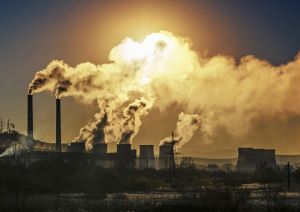
Climate change is no longer just a prediction or far-off vision of the future, and its existence is not a matter of opinion. Climate change is here, and it’s forcing us to change the way we look at Disaster Risk Reduction.
Every year, about 200 million people across the globe are affected by natural disasters. Of those affected, 26 million are forced into poverty, and 67,000 are killed. But contrary to popular belief, natural disasters do not inevitably cause such extreme wreckage and economic all loss on their own. It is when hazards are combined with exposed and ill-prepared populations that we see this type of severe devastation.
Similarly to Emergency Management, Disaster Risk Reduction is aimed to make such communities more resilient to disasters by reducing risk through the active prevention of future hazards, as well as anticipant planning for disaster risk mitigation and recovery.
However, the frequency and severity of natural hazards has risen substantially over recent decades, having almost doubled in comparison to the previous twenty years, and it’s only expected to get worse from here. More extreme weather conditions are projected to further increase the number and scale of hazards, which in turn will exacerbate the disparities faced by vulnerable populations and communities.
The cause of this continually increased intensity for disasters is nothing but natural. Human activities have led to increased global temperatures and the overall degradation of our climate. As reported by the United Nations Office for Disaster Risk Reduction (UNDRR), within the next 80 years, global warming will cause an increase of climate related disasters including, but not limited to:
- Twice as many devastating cyclones
- Double the number of people suffering from extreme drought
- A 7% increase of floods caused by extreme precipitation events for every 1°C global temperature increase
- An extension of the length of fire season by as much as 3 additional months in areas exposed to wildfires by 2030
These trajectories make clear that, in its amplification of hazards and their consequences, global warming creates major obstacles to reducing disaster risk; even with climate-smart adaptations to current DRR frameworks. The UNDRR outlines five prominent challenges that climate change poses to disaster risk reduction.
Future Risks are Predicted to Become Unmanageable
With current projections indicating a global temperature increase of 3° or more, climate change is on a fast-track to causing tipping-point impacts such as ecosystem collapse. Early warnings cautioned that damaging human activities could cause irreversible changes to our climate. Now, as greenhouse gas emissions continually increase, these permanent climate changes have graduated from a possible outcome, into a probable reality.
Climate change not only increases the frequency and intensity of natural disasters, but in doing so, it also puts stress on water and food security. This further magnifies risks for vulnerable communities and populations by increasing their exposure and vulnerability to hazards.
Risk-Blind Planning Leads to Maladaptation
DRR planning that overlooks the effects of climate change on hazards results in a failure to adapt properly to the reality of the risks faced by communities. It has been established that climate change increases the frequency and severity of disasters. However, another result of climate change is that unsuspecting and unprepared populations are, and will increasingly continue to be hit by new hazards which have never before been experienced by their regions.
Current risk analytics don’t have adequate capabilities to comprehensively evaluate a full range of possible hazards, resulting in an inability to properly enable communities to take preventative and preparatory actions.
Lack of Actions to Manage Long Term Impacts
Current development planning has yet to properly address long-term climate crisis impacts such as the rising sea level and ocean acidification. This has resulted in improper planning for rapid climate response actions to be executed once necessary. These unacknowledged tipping-point climate changes, in combination with increased extreme weather events, will likely lead to massive displacement and loss of livelihoods for millions due to a lack of preparation.
The volume of those needing health and other basic services will be overwhelming for governmental and other institutions due to a lack of financial planning and preparation, and lives will be lost as a result.
Underestimation of the Necessary Investments
As a consequence of the lack of planning described previously, financial systems have grossly underestimated climate risk. Thus, they have also improperly quantified the value of their assets within the reality of the current era of climate change.
Particularly longer-term sectors and investors such as agriculture, insurance, infrastructure, and pension funds should show a larger concern, and revisit the value of their investments.
Exacerbation of Disasters Leads to Greater Disparities
Disadvantaged populations and communities are far more vulnerable to natural disasters, and therefore suffer disproportionately to their devastating effects. The magnification of these hazards caused by climate change results in a vicious cycle where vulnerable groups’ ability to mitigate and manage risks, and respond when a disaster occurs is disproportionately weakened, which results in further escalation of the inequalities they face.
The UNDRR recommends numerous policy updates and changes, which include taking action to dramatically reduce emissions of carbon and other greenhouse gasses, and the implementation of the Sendai Framework for Disaster Risk Reduction.
With an increase in natural disasters also comes an increase in disaster relief, emergency response, and humanitarian aid missions and projects.
Plan ahead for your organization’s future healthcare staffing needs by getting in contact with your new Wellhart representative today!
